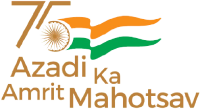Pritam Das

Thesis Supervisor: Dr. Vaibhav Pant
Joining Month & Year: December, 2022
pritam
755
New Building Office, Room No. 15
Personal webpage (Maintained by individual)
Academic Background
Gold Medalist, M.Sc. Physics - Central University of Rajasthan
B.Sc. Physics, Honours - University of Calcutta
Research Interest and Description
1) Multiwavelength study of the physical processes happening in the middle corona of the Sun: The Sun is our nearest star, and therefore, it is very well observed. The solar atmosphere comprises layers with different plasma beta (the ratio between gas pressure and magnetic pressure). The variation of the plasma beta from greater than one in the solar photosphere to less than one in the solar corona determines the relative importance of the plasma pressure and magnetic pressure in governing the dynamics of the solar atmosphere. Similarly, magnetic field topology changes from closed to open (locally) magnetic fields while moving through the middle corona, which is defined as a region of solar atmosphere encompassing 1.5-6 solar radii. This region is not well explored due to the lack of multiwavelength observations.
In this project, we aim to study the dynamics and structure of the middle corona. We will study the origin and dynamics of transients in the middle corona using the data from the newly launched Solar Ultraviolet Imager/GOES-R, Solar Orbiter, SDO, K-Cor, and Aditya-L1. Furthermore, we will create an automated catalogue that will offer the opportunity to study the long-term variation of the middle corona of the Sun.
2) Developing deep learning models for automated detection CMEs: Space weather predictions work hand in hand with observational evidence. The Variable Emission Line Coronagraph (VELC) payload on board is a state-of-the-art coronagraph that will be observing the solar Corona from 1.05 to 3 Solar radii with very high spatial and time resolution, ideal for studying CME origin and propagation through the inner and middle corona. For this project, being a member of the Aditya-L1 Support Cell (a joint collaboration between ARIES and ISRO), we will develop in-house deep learning and AI/ML models (Asensio Ramos, A., Cheung, M.C.M., Chifu, I. et al, 2023) for automated detection of coronal mass ejections whenever they pass through the field of view of Aditya-L1’s VELC payload. This will not only expedite space weather predictions but also alert us in case an Earth-directed CME is detected.
3) Aditya-L1 (Aditya-L1 Support Cell)
https://al1ssc.aries.res.in/present_members
As a former member of the Adtiya-L1 Support Cell, we will be developing software to utilise the processed data from the payloads on board the Aditya-L1.
Recent Publications
- Das, P., & Bose, R., 2024, ISRO’s recent Space Odyssey, India Calling, Vol. XV (3-10), Center for Bharat Studies, Research Institute for Languages and Cultures of Asia, Mahidol University.

